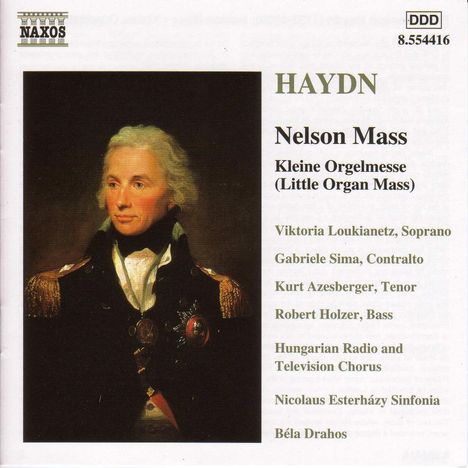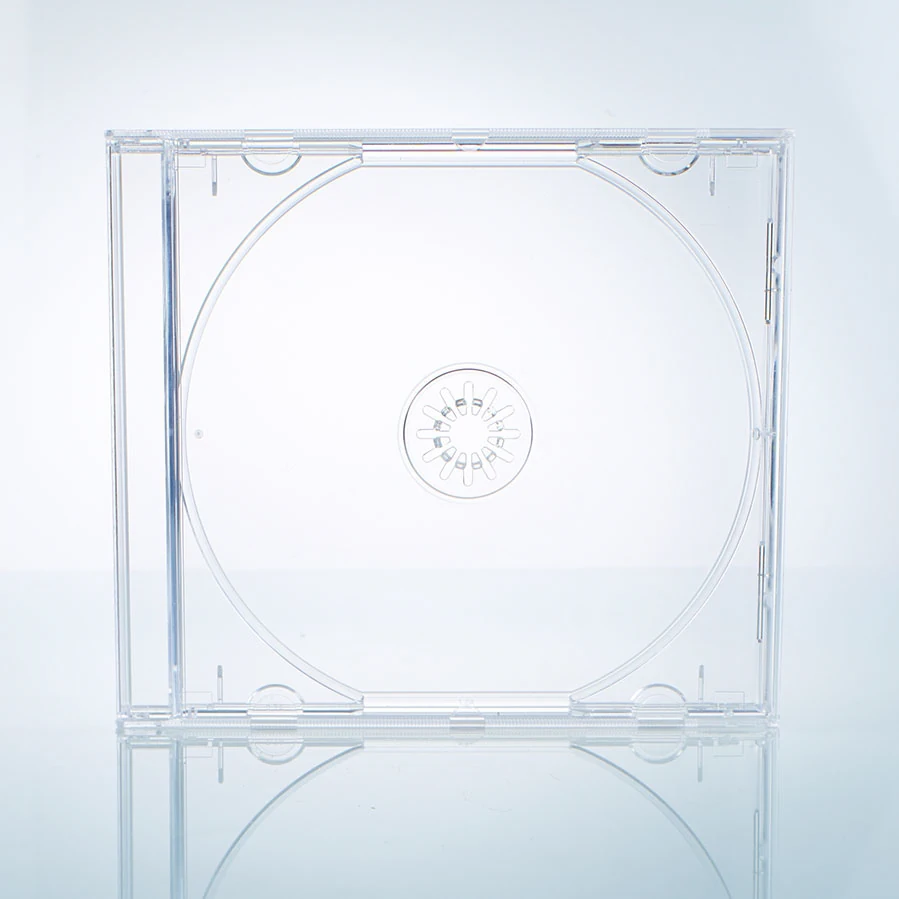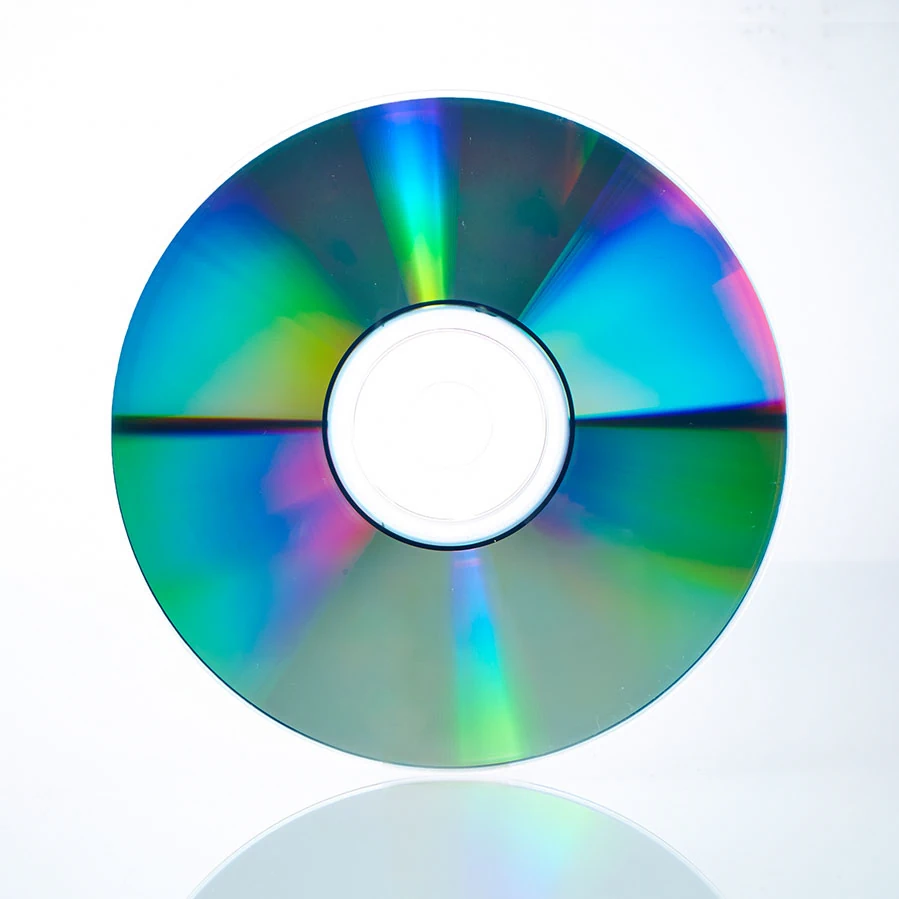Joseph Haydn: Messen Nr.7 & 11 (Kl.Orgelsolo & Nelson) auf CD
Messen Nr.7 & 11 (Kl.Orgelsolo & Nelson)
Herkömmliche CD, die mit allen CD-Playern und Computerlaufwerken, aber auch mit den meisten SACD- oder Multiplayern abspielbar ist.
- Künstler:
- Loukianetz, Sima, Azesberger, Holzer, Nicolaus Esterhazy Sinfonia, Bela Drahos
- Label:
- Naxos
- Aufnahmejahr ca.:
- 1998
- Artikelnummer:
- 2191838
- UPC/EAN:
- 0636943441626
- Erscheinungstermin:
- 6.3.2000
Die Nelson-Messe wurde ursprünglich für drei Trompeten, Pauken, Streicher und Orgel komponiert, wobei der Orgelteil später vom Esterházy-Kapellmeister Johann Nepomuk Fuchs für Holzbläser transkribiert wurde. Die Messe ist wahrhaft symphonisch und öffnet sich eindrucksvoll, Trompeten und Trommeln stehen in der bedrohlichen Tonart d-Moll im Vordergrund, bevor der Sopransolist eintritt. Das fröhliche Gloria besteht aus drei Abschnitten, einem Allegro in D-Dur, in dem die Solisten mit dem vollen Chor kontrastiert werden, gefolgt von einem Qui tollis in B-Dur, mit Adagio bezeichnet, das mit einem Basssolo beginnt und sich mit der Begleitung von Orgel und Streichern nach d-Moll bewegt. Der Schlussabschnitt erinnert an den ersten in einem fröhlichen D-Dur-Allegro, das zum üblichen fugierten Schluss führt. Das Credo besteht wiederum aus drei Abschnitten, einem Allegro con spirito und Vivace in D-Dur, das ein Largo in G-Dur umrahmt, das mit einem bewegten Sopransolo beginnt, Et incarnatus est. Der dritte Abschnitt, Et resurrexit, geht bald wieder von h-Moll nach D-Dur über und endet im Triumph. Der Sanctus beginnt mit einem meditativen Adagio, das bald in ein lebhafteres Pleni sunt coeli mündet. Der Benedictus, der von d-Moll zu einem energischen D-Dur-Hosanna in excelsis übergeht, gibt dem Solosopran mit einer weiterhin fordernden hohen Tessitura eine weitere Betonung. Solostimmen werden im G-Dur-Agnus Dei, einem Satz betender Gelassenheit, vor dem abschließenden kontrapunktischen D-Dur-Dona nobis pacem verwendet.
Die frühere Missa brevis Sancti Joannis de Deo oder Kleine Orgelmesse in B-Dur wurde wahrscheinlich im Winter 1777-78 für die Kapelle der Barmherzigen Brüder in Eisenstadt geschrieben, zu Ehren des Ordensgründers, des heiligen Johannes von Gott. Sie hat einen viel kleineren Umfang als die Nelson-Messe und wurde ursprünglich für Violinen und Orgel, mit einem Sopransolisten im Benedictus und einem vierstimmigen Chor komponiert.
Product Information
The Nelson Mass was originally scored for three trumpets, timpani, strings and organ, with the organ part later transcribed by the Esterházy Kapellmeister Johann Nepomuk Fuchs for woodwind. The Mass is truly symphonic and opens impressively, trumpets and drums to the fore in the ominous key of D minor, before the entry of the soprano soloist. The joyful Gloria is in three sections, a D major Allegro in which soloists are contrasted with the full choir, followed by a B flat major Qui tollis, marked Adagio, opening with a bass solo and moving to D minor with an accompaniment of organ and strings. The final section recalls the first in a cheerful D major Allegro, leading to the customary fugal ending. The Credo is again in three sections, an Allegro con spirito and Vivace in D major framing a G major Largo that starts with a moving soprano solo, Et incarnatus est. The third section, Et resurrexit soon moves from B minor to D major once more, to end in triumph. The Sanctus starts with a meditative Adagio, soon leading to a livelier Pleni sunt coeli. The Benedictus, moving from D minor to an energetic D major Hosanna in excelsis, gives further prominence to the solo soprano, with continuingly demanding high tessitura. Solo voices are used in the G major Agnus Dei, a movement of prayerful serenity, before the final contrapuntal D major Dona nobis pacem.
The earlier Missa brevis Sancti Joannis de Deo or Kleine Orgelmesse (‘Little Organ Mass’) in B flat major was probably written in the winter of 1777-78 for the chapel of the Brothers of Mercy in Eisenstadt, in honour of the founder of the order, St John of God. It is on a much smaller scale than the Nelson Mass and was originally scored for violins and organ, with a soprano soloist in the Benedictus and a four-part choir.
Disk 1 von 1 (CD)
-
1 Mass No. 11 In D Minor, Hob.Xxii:11, "nelsonmesse", "imperial Mass", "coronation Mass": Kyrie
-
2 Mass No. 11 In D Minor, Hob.Xxii:11, "nelsonmesse", "imperial Mass", "coronation Mass": Gloria: Gloria In Excelsis Deo
-
3 Mass No. 11 In D Minor, Hob.Xxii:11, "nelsonmesse", "imperial Mass", "coronation Mass": Gloria: Qui Tollis Peccata Mundi
-
4 Mass No. 11 In D Minor, Hob.Xxii:11, "nelsonmesse", "imperial Mass", "coronation Mass": Gloria: Quoniam Tu Solus Sanctus
-
5 Mass No. 11 In D Minor, Hob.Xxii:11, "nelsonmesse", "imperial Mass", "coronation Mass": Credo: Credo In Unum Deum
-
6 Mass No. 11 In D Minor, Hob.Xxii:11, "nelsonmesse", "imperial Mass", "coronation Mass": Credo: Et Incarnatus Est
-
7 Mass No. 11 In D Minor, Hob.Xxii:11, "nelsonmesse", "imperial Mass", "coronation Mass": Credo: Et Resurrexit
-
8 Mass No. 11 In D Minor, Hob.Xxii:11, "nelsonmesse", "imperial Mass", "coronation Mass": Sanctus
-
9 Mass No. 11 In D Minor, Hob.Xxii:11, "nelsonmesse", "imperial Mass", "coronation Mass": Benedictus: Benedictus Qui Venit
-
10 Mass No. 11 In D Minor, Hob.Xxii:11, "nelsonmesse", "imperial Mass", "coronation Mass": Benedictus: Hosanna In Excelsis
-
11 Mass No. 11 In D Minor, Hob.Xxii:11, "nelsonmesse", "imperial Mass", "coronation Mass": Agnus Dei: Agnus Dei, Qui Tollis
-
12 Mass No. 11 In D Minor, Hob.Xxii:11, "nelsonmesse", "imperial Mass", "coronation Mass": Agnus Dei: Dona Nobis Pacem
-
13 Mass No. 7 In B Flat Major, Hob.Xxii:7, "missa Brevis Sancti Joannis De Deo", "kleine Orgelsolomesse" (Little Organ Mass
-
14 Mass No. 7 In B Flat Major, Hob.Xxii:7, "missa Brevis Sancti Joannis De Deo", "kleine Orgelsolomesse" (Little Organ Mass
-
15 Mass No. 7 In B Flat Major, Hob.Xxii:7, "missa Brevis Sancti Joannis De Deo", "kleine Orgelsolomesse" (Little Organ Mass
-
16 Mass No. 7 In B Flat Major, Hob.Xxii:7, "missa Brevis Sancti Joannis De Deo", "kleine Orgelsolomesse" (Little Organ Mass
-
17 Mass No. 7 In B Flat Major, Hob.Xxii:7, "missa Brevis Sancti Joannis De Deo", "kleine Orgelsolomesse" (Little Organ Mass
-
18 Mass No. 7 In B Flat Major, Hob.Xxii:7, "missa Brevis Sancti Joannis De Deo", "kleine Orgelsolomesse" (Little Organ Mass
Mehr von Joseph Haydn
-
Joseph HaydnSämtliche Klaviertrios9 CDsAktueller Preis: EUR 29,99
-
Joseph HaydnL'Incontro Improvviso H18:6 (Dramma giocoso per musica)2 CDsVorheriger Preis EUR 29,99, reduziert um 0%Aktueller Preis: EUR 14,99
-
Joseph HaydnSämtliche Klavierkonzerte (H18 Nr.1-6,8,10,11)2 CDsVorheriger Preis EUR 24,99, reduziert um 0%Aktueller Preis: EUR 14,99
-
Andreas RombergSymphonie Nr.4 op.51 "Alla Turca"CDVorheriger Preis EUR 17,99, reduziert um 0%Aktueller Preis: EUR 7,99








